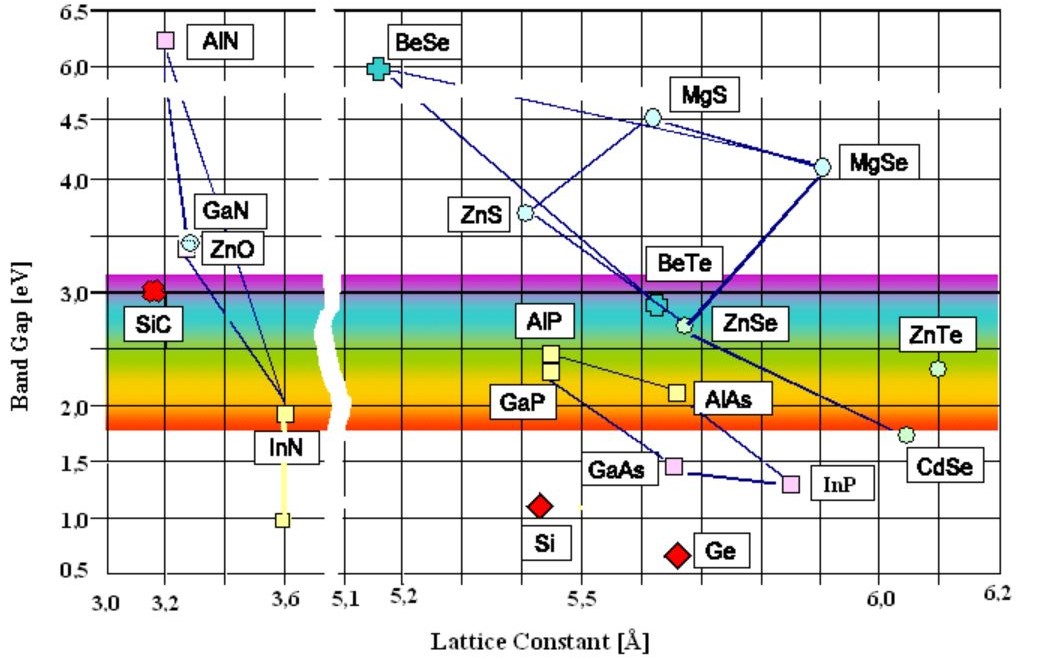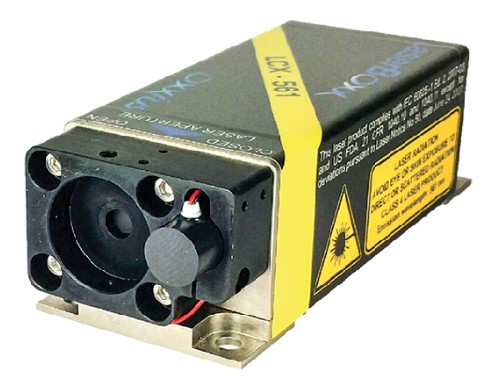
How do DPSS lasers fill the “yellow gap?”
Diode lasers offer a vast range of wavelength options from the ultraviolet through the infrared. But, there is still one glaring hole in the visible spectrum between 520 nm and 633 nm. This region, which is often referred to as the “yellow gap,” results from the disparity between the upper range of InGaN diodes and the lower range in AlGaInP. When most people talk about Nd:YAG or Nd:YVO4 DPSS lasers, they are very familiar with the main 1064 nm laser line, and for a good reason, since it is the most efficient transition. But, what people often overlook is that Nd:YAG can also lase at 946 nm, 1123 nm, 1319 nm, 1415 nm, and 1444 nm and Nd:YVO4 can also lase at 914 nm and 1342 nm. Therefore, by using non-linear optical elements to produce either second harmonic generation or other sum-frequency generation, these DPSS lasers, can start to fill in the yellow gap. For example, the second harmonic of 1123 nm produces a 561 nm laser with a green-yellow color and the sum frequency of 1064 nm and 1342 nm produces a 594 nm laser with a yellow-orange color. Of these two options, the 561 nm laser is by far the most stable and reliable because it only requires one fundamental laser frequency to be maintained within the laser cavity. As a result, most DPSS laser manufactures have solidified around the 561 nm laser as their primary yellow laser offering.
The wavelength range of a particular semiconductor material is far beyond the scope of this blog post. Still, if you would like a deeper dive into the subject, you can learn more in a previous post titled “Laser Diode Fundamentals: Bandgap Energy and Wavelength.” While there are some direct laser sources such as the yellow HeNe laser, the lack of efficient direct solid-state lasers in the region has primarily led to the lack of yellow lasers on the market today. But, as we have shown in several previous posts on this subject, this dead zone lines up with several biologically relevant fluorophores used in fluorescence microscopy and DNA sequencing. Luckily, through the use of second-harmonic generation, DPSS lasers can be used to fill this gap.

Here at RPMC, we offer two different options at 561 nm from Oxxius, available in either low noise or single longitudinal mode (SLM) configurations. Both lasers are available in their standard, compact, self-contained laser module utilizing Oxxius’ proprietary, alignment-free monolithic resonator. Both lasers provide a perfect TEM00 output beam with output power up to 300 mW. The LCX-561S SLM option provides an extremely long coherence length greater than 50 m making it ideal for holography and interferometry applications. The LCX-561L low noise option gives an extremely stable power output with less than 0.2% RMS fluctuations. The LCX-561L is the ideal option for confocal fluorescence microscopy, DNA sequencing, and flow cytometry. The LCX-561L is often integrated into the LaserBoxx laser combiner, as well since many of these applications may require multiple excitation wavelengths.
For more information on the 561 nm DPSS lasers that we offer from Oxiuss, click here.
Talk to one of our knowledgeable Product Managers today by emailing us at info@rpmclasers.com or Contact Us with the button below!
Have questions?

 SHIPS TODAY
SHIPS TODAY 